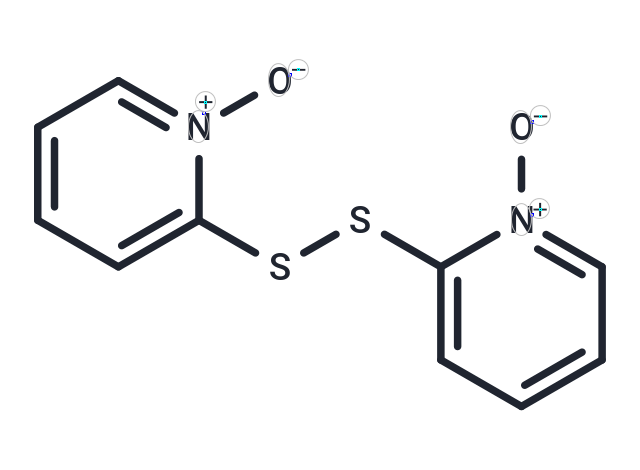Shopping Cart
- Remove All
 Your shopping cart is currently empty
Your shopping cart is currently empty

Dipyrithione appears to have novel cytotoxicity and potent broad-spectrum antitumor activity

| Pack Size | Price | Availability | Quantity |
|---|---|---|---|
| 10 mg | $31 | In Stock | |
| 25 mg | $48 | In Stock | |
| 50 mg | $70 | In Stock | |
| 100 mg | $98 | In Stock | |
| 200 mg | $148 | In Stock | |
| 500 mg | $252 | In Stock |
| Description | Dipyrithione appears to have novel cytotoxicity and potent broad-spectrum antitumor activity |
| In vitro | Dipyrithione(PTS2) inhibited proliferation in four cancer cell lines in a dose-dependent manner. Treated cells showed shrinkage, irregular fragments, condensed and dispersed blue fluorescent particles compared with control cells. PTS2 induced cycle-arrest and death. Cleavage of caspase-9, caspase-3, and PARP were detected in PTS2-treated cells. Antitumor activity of PTS2 was more effective against widely used cancer drugs and its precursor[1]. |
| Cell Research | Used MTT assays and trypan blue staining to test the viability of cancer cell lines. Hoechst 33258 and DAPI staining were used to observe cell apoptosis. Cell-cycle percentages were analyzed by flow cytometry. Apoptosis was assayed using caspase-3 and poly (ADP-ribose) polymerase (PARP) combined with Western blotting. Student's t-test was used for statistical analysis[1]. |
| Molecular Weight | 252.31 |
| Formula | C10H8N2O2S2 |
| Cas No. | 3696-28-4 |
| Smiles | [O-][n+]1ccccc1SSc1cccc[n+]1[O-] |
| Relative Density. | 1.38 g/cm3 |
| Storage | Powder: -20°C for 3 years | In solvent: -80°C for 1 year | Shipping with blue ice. | ||||||||||||||||||||
| Solubility Information | DMSO: 2.52 mg/mL (10 mM), Sonication is recommended. | ||||||||||||||||||||
Solution Preparation Table | |||||||||||||||||||||
DMSO
| |||||||||||||||||||||

Copyright © 2015-2025 TargetMol Chemicals Inc. All Rights Reserved.